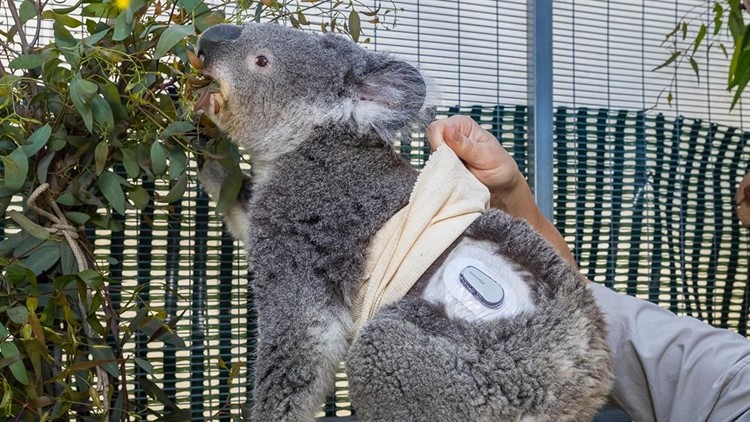SAN DIEGO (News 8) - An interdisciplinary group of experts announced Monday that they are successfully documenting the sugar levels of a diabetic San Diego Zoo koala with a glucose monitoring system designed for humans.
The male marsupial, Quincy, has type 1 diabetes, which means he needs additional insulin to control blood sugar, maintain energy, build muscle and gain weight. Previously, the koala needed to have his skin pricked several times per day to test his glucose levels.
This month, veterinarians, endocrinologists from Scripps Health, biotechnology professionals from Dexcom and zoo animal care specialists placed Dexcom's G6 Continuous Glucose Monitoring System on Quincy in order to disturb the animal less often. Like other koalas, Quincy typically sleeps during the day and prefers solitary behavior.
The course of action wasn't typical for any involved, said Cora Singleton, a senior veterinarian with the zoo.
"Very few koalas have been diagnosed with and treated for diabetes," Singleton said. "We are hopeful that this technology will work as well in koalas as it does in people, thus allowing us to optimize his insulin therapy while promoting his welfare during his illness."
Dexcom's G6 system started shipping to humans early this month.
Quincy's sensor and transmitter send blood glucose levels in real time to a smart device monitored by caretakers. The system also has built-in alerts and alarms that will proactively notify the koala's caretakers before his blood glucose reaches dangerous levels.
"Hypoglycemia -- abnormally low blood sugar -- is a safety concern, and the limiting factor to using the right doses of insulin, especially in an animal that can't tell us their symptoms," said Athena Philis-Tsimikas, corporate vice president of the Scripps Whittier Diabetes Institute. "The continuous glucose monitoring now allows optimal dosing to best manage Quincy's diabetes."
Quincy's diabetic condition was initially diagnosed by veterinarians at the Los Angeles Zoo, the koala's previous home. He was transferred to the San Diego Zoo for continued diagnosis and treatment.
Animal experts don't know what may have triggered Quincy's original blood sugar problems.



